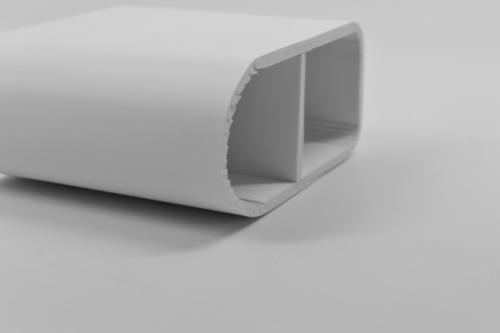DIY Tips for Installing Foam Insulation Boards: A Step-by-Step Tutorial

Installing foam insulation boards is an easy and effective way to increase the energy efficiency of your home. Foam boards provide high R-value insulation that seals air leaks and helps regulate indoor temperatures. With some basic tools and proper planning, you can install foam boards on your own on a weekend.
This DIY foam board installation guide covers the key steps and tips.
Choose the Right Foam Board Insulation
The two main types of foam board insulation are:
- Polystyrene (EPS) boards - EPS foam is lightweight, moisture-resistant, affordable, and offers R-values around R-3.5 to R-4.5 per inch. It comes in various rigid sheets.
- Polyisocyanurate/polyurethane (Polyiso) boards - Polyiso foam offers the highest R-value (around R-6 to R-6.5 per inch) and excellent dimensional stability. But it is more expensive than EPS.
Consider the required R-value, location, and your budget when selecting foam boards. Most DIYers choose standard-size EPS boards as they offer sufficient insulation for most needs. For colder climates or specialized applications, polyiso may be necessary.
Make Sure Your Work Area is Clean and Accessible
First, clear barriers and clutter to ensure you have ample working space on all needed sides of the installation area. For exterior insulation board projects, set up scaffolding or ladders as necessary. Bring boards, support material, and tools within easy reach.
Sweep or vacuum any loose dirt, dust, or debris from the insulation board mounting location. Dust and irregularities will impede board adhesion and reduce insulation effectiveness. All surfaces should be smooth, clean, and dry before installing foam boards.
Measure and Mark Guidelines on Mounting Surfaces
For a seamless professional aesthetic, use a chalk line to snap straight reference guidelines on installation surfaces before applying adhesive. Guidelines help align boards during placement. If installing multiple boards in a row vertically, use a level to mark plumb cut lines.
For wall insulation projects, measure and mark stud locations to fasten boards securely later. Transfer all measurements to boards for precision cutting as needed. Having properly measured reference lines is key for a neat DIY foam board installation.
Cut Boards to Correct Shape and Size
Most foam board insulation comes in 4x8 ft. sheets that must be cut to fit your specific project. Use a sharp utility knife and metal straightedge to score and snap EPS boards to size. For dense polyiso boards, you’ll need a circular saw with fine-tooth blade (40+ teeth).
Refer frequently to guidelines and measurements on walls while cutting to achieve accurate sizes and shapes. Label boards to match project areas for easy identification. Cut slowly and steadily for clean edges - ragged edges reduce effectiveness and appearance. Wear safety glasses and gloves.
Attach Base Layer of Boards with Adhesive
Before mounting, dry fit new boards over outlined areas to test fit. Once satisfied, apply adhesive in lines, dots, or beads per manufacturer directions all over contact surfaces, spreading evenly with a notched trowel. Lift and press the first board layer gently to the wall surface within your guidelines.
Use a hand roller, j-roller, or weighted roller to firmly spread and adhere the entire board surface to the substrate. Work from the center of boards outward to avoid trapping air bubbles. Follow open times for your specific adhesive and allow it to set partially before adding layers.
Fasten Insulation Boards with Mechanical Fasteners
Although adhesive bonds foam boards, additional mechanical attachments provide long-term structural anchoring. For rigid exterior applications, combine adhesive and screws with washers to secure boards. Drill clearance holes slightly wider than screws through boards, taking care not to contact utilities behind walls.
Drive screws to depth of just below foam surface. Overtightening can deform boards and reduce insulation value at fastener points. Follow recommendations for screw type, length, and spacing based on-board thickness and substrate. Staggering helps prevent cracking. Let adhesive fully cure before rasping or patching screw heads for a flush finish.
Fill Gaps and Seal All Seams
Look over boards to check for uneven spots, gaps wider than 1/4", or cracking after initial curing. Use adhesive or insulation foam sealant to fill any narrow gaps by injecting into crevices or voids between boards or around penetrations like conduits or vents. After filling, smooth with a putty knife once dry.
For large gaps or damaged areas, cut small pieces of foam board to size as patches and glue into place. Use board manufacturer’s recommended tapes or structural sealants to cover all exposed seams between boards and corners for improved air sealing and appearance. Let seals fully cure before finishing or adding cladding layers.
Add Supplementary Insulation Layers if Needed
Depending on your climate, project specifications, and insulation needs - you may require multiple layers of foam boards for higher composite R-value. After the base layer has cured, repeat steps for cutting, adhesive mounting, and fastening additional boards overtop to desired thickness or insulation value.
Stagger all joints between layers for best coverage. Fill and seal any crevices between each layer as you go. Building up multiple crossed layers boosts overall insulation capacity and further eliminates gaps for maximum energy efficiency. Follow local building codes for total allowable foam board thickness.
Protect and Finish Exterior Insulation Boards Appropriately
Bare exterior EPS or polyiso foam board insulation exposed to weather will degrade quickly without protective finishes. Ensure insulation boards used outside have proper UV chemical resistance and waterproof coatings.
For direct exterior finishes, adhere concrete board, fiber cement board, weatherproof housewraps, vinyl siding, or other suitable vapor-permeable cladding over insulation boards with recommended fasteners and spacing. Use flashing seals at openings or joints to prevent moisture issues. Apply special code-approved exterior insulating finishes if desired.
With accurate planning, proper materials, and by following essential installation steps, you can add professional-quality foam insulation boards that boost your home’s energy savings. Monitor boards over time and reseal any new gaps or damage that may occur due to natural building movements or settling.





Comments